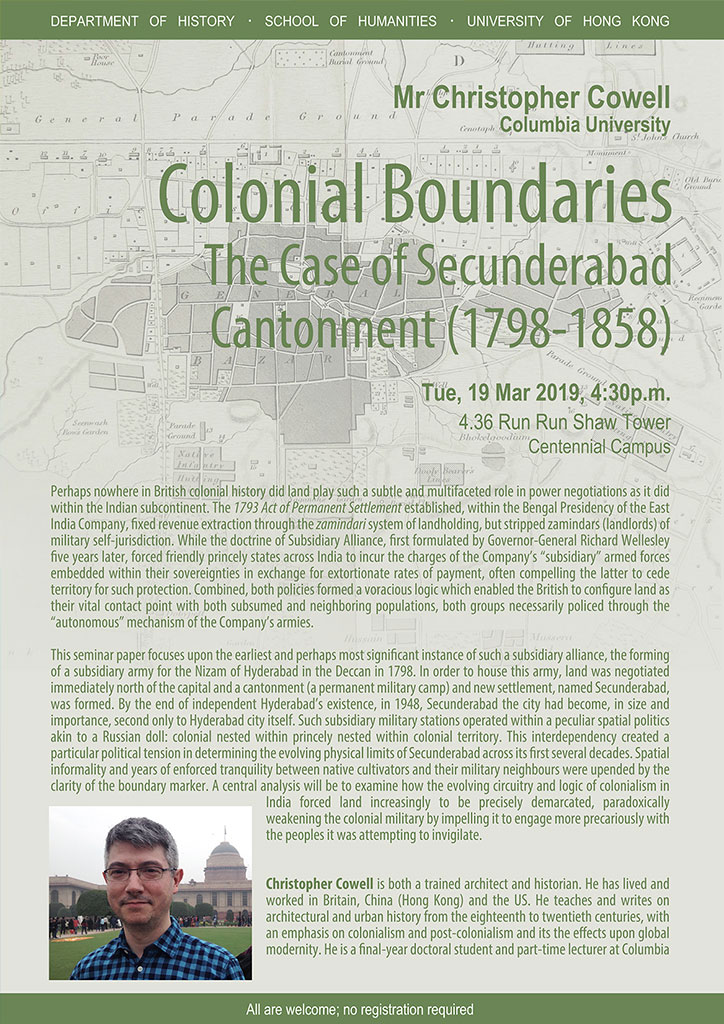
Department of History
Colonial Boundaries: The Case Of Secunderabad Cantonment (1798-1858)
Christopher Cowell
Columbia University
Perhaps nowhere in British colonial history did land play such a subtle and multifaceted role in power negotiations as it did within the Indian subcontinent. The 1793 Act of Permanent Settlement established, within the Bengal Presidency of the East India Company, fixed revenue extraction through the zamindari system of landholding, but stripped zamindars (landlords) of military self-jurisdiction. While the doctrine of Subsidiary Alliance, first formulated by Governor-General Richard Wellesley five years later, forced friendly princely states across India to incur the charges of the Company’s “subsidiary” armed forces embedded within their sovereignties in exchange for extortionate rates of payment, often compelling the latter to cede territory for such protection. Combined, both policies formed a voracious logic which enabled the British to configure land as their vital contact point with both subsumed and neighboring populations, both groups necessarily policed through the “autonomous” mechanism of the Company’s armies.
This seminar paper focuses upon the earliest and perhaps most significant instance of such a subsidiary alliance, the forming of a subsidiary army for the Nizam of Hyderabad in the Deccan in 1798. In order to house this army, land was negotiated immediately north of the capital and a cantonment (a permanent military camp) and new settlement, named Secunderabad, was formed. By the end of independent Hyderabad’s existence, in 1948, Secunderabad the city had become, in size and importance, second only to Hyderabad city itself. Such subsidiary military stations operated within a peculiar spatial politics akin to a Russian doll: colonial nested within princely nested within colonial territory. This interdependency created a particular political tension in determining the evolving physical limits of Secunderabad across its first several decades. Spatial informality and years of enforced tranquility between native cultivators and their military neighbours were upended by the clarity of the boundary marker. A central analysis will be to examine how the evolving circuitry and logic of colonialism in India forced land increasingly to be precisely demarcated, paradoxically weakening the colonial military by impelling it to engage more precariously with the peoples it was attempting to invigilate.
Christopher Cowell is both a trained architect and historian. He has lived and worked in Britain, China (Hong Kong) and the US. He teaches and writes on architectural and urban history from the eighteenth to twentieth centuries, with an emphasis on colonialism and post-colonialism and its the effects upon global modernity. He is a final-year doctoral student and part-time lecturer at Columbia University’s Graduate School of Architecture, Planning & Preservation.
All are welcome. No registration is required.
Date/Time: Tuesday 19/03/2019 16:30 – 18:00
Venue: Room 4.36, Run Run Shaw Tower, Centennial Campus
Language: English
For further information, please visit: https://www.history.hku.hk/news_s18_cowell.html
